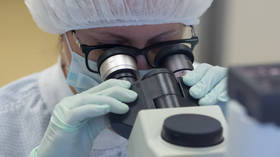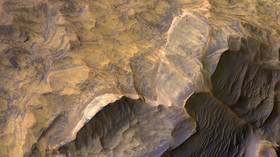Russian scientists create new biomaterial to restore bones for sufferers of osteoporosis

Researchers from Russia’s Samara National Research University have created a biomaterial to restore bones, which could be revolutionary for the treatment of osteoporosis. The process uses a natural mineral called hydroxyapatite.
The research, published in the Russia-based medical journal ‘Journal of Optical Technology’ in March, has recently become known to the general public after a lead researcher spoke to Moscow news agency RIA Novosti. According to Elena Timchenko, a professor at the university, hydroxyapatites are currently used to restore the mineral components of bones, but the newly developed technology would also help restore organic components.
Also on rt.com Are Western attacks on the Russian Covid-19 vaccine a corporate cold war against humanity?“The new material enables the restoration of lost mineral components of bone tissue in osteoporosis treatment, as well as organic leavening, which is the ‘framework’ of all biotissue,” Timchenko said.
Osteoporosis is a chronic disease which causes a decrease in bone density, eventually leading to increased fragility and the risk of fracture. While it is mainly caused by age-linked hormone changes, especially in post-menopausal women, the disease can also be caused by prolonged zero-gravity space flight. According to NASA, tests have shown that astronauts lose roughly 10 percent of their femur bone mass over a six-month trip in space. The university’s creation can now be used in preclinical trials in order to assess its effectiveness in preventing osteoporosis, both on the ground and in space.
Samara’s National Research University is one of the country’s leading institutions, and during the Soviet period became well-known for its work with the space program. In 1966, when it was then known as the Kuibyshev Aviation Institute, it was named after Sergey Korolev, a rocket engineer who played a prominent role in the Space Race.
Also on rt.com Goats and BREAST MILK protein may be key to fighting Covid-19, Russian scientists suggestThink your friends would be interested? Share this story!














